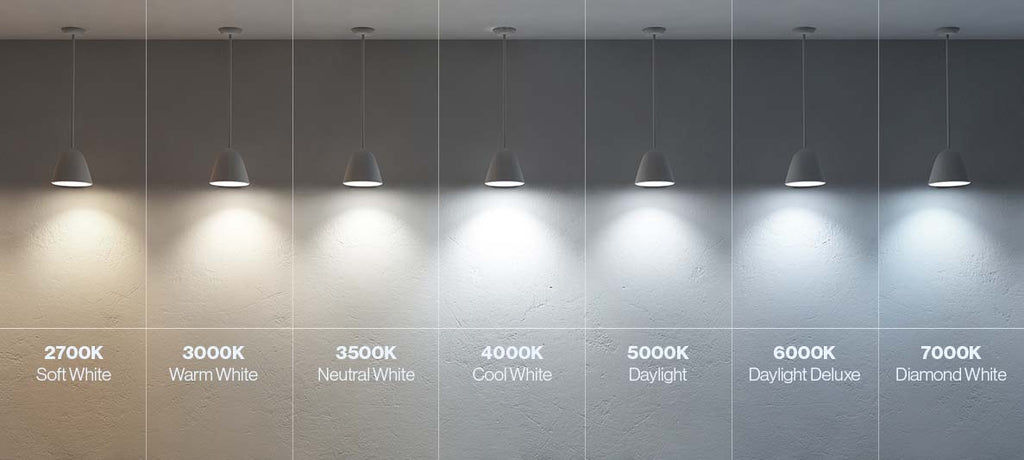How Many Lumens is the Sun? (and other thought-provoking lighting questions)
Have you ever walked outside on a clear summer day and felt totally overwhelmed by the brightness of the sun? We get it. As a lighting company, we spend a lot of time thinking about brightness—how to measure it, how to improve it, and yes, even how to compare it to the biggest and brightest light source in our solar system.
So that got us thinking: how many lumens is the Sun? It's a wild question, but one that actually has an answer. And once you hear the number, you might never look at your ceiling light the same way again.

First of all, What’s a Lumen?
Before we get cosmic, let’s ground ourselves for a second. A lumen is a unit of measurement that tells you how much visible light is being emitted. The more lumens, the brighter the light. A 60-watt incandescent bulb, for example, produces around 800 lumens.
Now, the Sun? It’s a little brighter than that.
So… How Many Lumens is the Sun?
The Sun emits approximately 93 lumens per watt of energy. Multiply that by its output (about 3.828 x 10²⁶ watts) and you get a staggering number: Around 3.57 x 10²⁸ lumens total. That’s 35.7 OCTILLION lumens. Yes, that’s a real number. It's a 3 followed by 28 zeroes.
Now, obviously, we don’t get all that here on Earth. The planet is 93 million miles away, and a lot of that light is absorbed or scattered in the atmosphere. But even so, direct sunlight at noon can deliver about 100,000 lux, or lumens per square meter. That’s why looking directly at the sun is a terrible idea.
Comparing the Sun to Our Lights
Okay, so how does that compare to the kind of lights we sell at Sunco?
Let’s run a few quick comparisons using average lumen outputs. To match the Sun’s total brightness, you would need:
42 quadrillion BR30 bulbs (That’s 42,000,000,000,000,000 bulbs)
1.7 quadrillion High Bay 150W lights (A better pick, but still absurd)
7.14 quadrillion 2x4 LED panels
Safe to say, we’re not replacing the Sun any time soon, but it’s fascinating to think about how powerful it really is—and it gives some perspective on how efficient our LED lights are for their size and power draw.

Other Fun Lighting Questions (That We Get Asked All the Time)
Why is the sky blue if the sun is white?
One common myth is that the sky is blue because it reflects our planet’s oceans, but this is untrue. While the ocean may also be blue, this is not because the ocean reflects the sky or vice versa. The short answer to both of these colors comes from the same concept: Rayleigh scattering (named after 19th-century British physicist Lord Rayleigh). The blue wavelengths of sunlight scatter more in Earth’s atmosphere, making the sky appear blue. Similarly, water absorbs longer wavelengths of light (like red and yellow) more than shorter wavelengths (like blue). As a result, blue light is reflected back to our eyes, making the ocean appear blue.

How can you use light to make a laser beam?
A laser beam isn’t just focused light—it’s coherent light, meaning all the light waves are aligned in wavelength, phase, direction, and polarization. You can't make a laser by simply focusing regular light because lasers rely on a quantum process called stimulated emission to generate this rare coherence.
So, what is coherence? Imagine light as countless sine waves. In coherent light, the peaks and troughs of all those waves line up and stay in sync as they travel. This requires the waves to have nearly the same wavelength (temporal coherence), to be in phase (spectral coherence), to travel in the same direction (spatial coherence), and to oscillate in the same polarization direction (polarization coherence).
Fun fact: LASER is an acronym that stands for Light Amplification by Stimulated Emission of Radiation.

Why does a camera flash make my eyes red?
Here’s a crazy fact: The inside of your eyes is always red. The bright light of the camera flash just makes the color more obvious. Your eye is essentially a hollow ball filled with clear fluid. The hole at the front of your eye, the pupil, lets light into the hollow space inside the eye. The light passes through this space and then strikes the inner back surface of the eye, known as the retina. The retina is packed with cells that detect the light, change it to electrical signals, and pass the signals on to the brain where the pattern of light is experienced as a visual image. The approximately 100 million light-sensitive cells on the human retina give us an amazing visual resolution, but they also require a prodigious amount of blood to keep them going. This blood is what gives the retina its red color.
Whenever you look at someone's pupil, you are in fact looking through a hole and at their retina. Because the cavity of the eye acts like a dark cave that absorbs most of the light, the red color of the retina usually looks black under normal light. Who knew?

Is there such a thing as too many lumens?
Definitely. Lighting that’s too bright for a space can cause glare, eye strain, and wasted energy. That’s why we recommend using dimmers or calculating the right number of lumens for your room size and ceiling height.
Final Thoughts
The Sun isn’t just hot—it’s unimaginably bright. It’s fun (and a little humbling) to compare our favorite lights to it, even if we’re talking in quadrillions. But at the end of the day, you don’t need a star to light your garage, office, or kitchen. You just need the right fixture, the right brightness, and the right team to help you choose it. Lucky for you, at Sunco, we’ve got all three.




Super cool read, loved the random facts and insight to things normally unknown